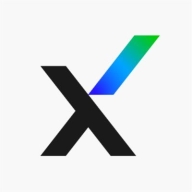

Trellix Network Detection and Response and Microsoft Defender Vulnerability Management compete in network security and vulnerability management. Microsoft Defender holds the advantage due to its extensive feature set and Microsoft ecosystem integration, despite Trellix's competitive pricing.
Features: Trellix Network Detection and Response offers robust threat detection capabilities, advanced analytics, and rapid incident response. Microsoft Defender Vulnerability Management provides threat intelligence, powerful vulnerability assessment, and management, with deep integration across Microsoft's ecosystem.
Room for Improvement: Trellix could enhance its integration capabilities with third-party products, streamline its analytics interface, and further automate threat response processes. Microsoft Defender could improve its customer support accessibility, reduce its initial setup complexity, and offer more competitive pricing options for small businesses.
Ease of Deployment and Customer Service: Trellix provides flexible deployment models and responsive customer support, simplifying implementation. Microsoft Defender is noted for seamless integration within Microsoft environments but may have less accessible customer support. Trellix excels in personalized service, while Microsoft benefits from easier integration in Microsoft-native contexts.
Pricing and ROI: Trellix is known for cost-effectiveness, balancing pricing with ROI. Microsoft Defender presents higher initial costs but provides strong ROI through feature set and integration. Though Trellix is favored for pricing, Microsoft's long-term value through comprehensive features and integration is significant.
Organizations typically do not rely solely on Microsoft products to avoid putting all eggs in one basket, which presents a challenge for maximizing ROI.
As a Microsoft partner, we receive significant discounts, making the solution affordable for us.
They are sometimes responsive, however, often issues cannot be reproduced on their end, making it challenging.
The support we receive from Microsoft is declining, and for example, after taking advanced support, we have not received satisfactory answers.
They are familiar with Microsoft products but are not direct Microsoft staff, which is an area needing improvement.
Technical support needs improvement as sometimes engineers are not available promptly, especially during high-severity incidents.
The customer support for Trellix Network Detection and Response is great.
The integration is straightforward for those who understand it, though documentation needs improvement.
It is scalable; I evaluated the product and decided to use Defender on over 700 of our company servers.
There are compatibility issues occasionally arising with false positives when other security tools are not whitelisted in Microsoft Defender.
It is very resource-intensive, consuming a lot of memory and CPU.
If Microsoft experiences downtime, this solution goes down as it is a SaaS-based solution where we have no control.
This scoring should be for specific industries as well. If I belong to the healthcare industry using Microsoft Defender Vulnerability Management, it should provide me with a risk score and show how I fare against the risk score of my industry.
A vulnerability I patch within 15 minutes takes 24 additional hours for an update.
The product is not stable; it often uses excessive memory and CPU, which makes it slow.
There should be improvements in AI intelligence, faster decision-making, and a more responsive technical support team.
I would like to see in Trellix Network Detection and Response more explanation about some details of the threat.
Overall, every organization wishes for cheaper options, but we look at the security side as well, so we are good for now.
For non-partners, however, the cost could be seen as higher, between seven to ten.
The pricing is reasonable, and it's included in the whole Microsoft E5 bundle, so it's all-inclusive.
The main advantage of Microsoft Defender Vulnerability Management is that it can locate and prevent most threats even when the endpoints are not connected to the corporate network, as long as the internet is available.
The feature for customizing to region-specific and domain-specific requirements in healthcare is particularly beneficial.
The most valuable aspect is the kind of assessment results I get, and the recommendations provided in Microsoft products really help in taking care of the resources.
Trellix NDR provides an essential defense by automatically responding to network incidents that firewalls may not catch.
What makes Trellix Network Detection and Response stand out for me compared to other tools is the way you can detect threats. It is very easy and comfortable to use, and the detection shows clearly on the screen, which is very easy to understand.
| Product | Market Share (%) |
|---|---|
| Trellix Network Detection and Response | 3.9% |
| Microsoft Defender Vulnerability Management | 1.8% |
| Other | 94.3% |

| Company Size | Count |
|---|---|
| Small Business | 9 |
| Midsize Enterprise | 2 |
| Large Enterprise | 5 |
| Company Size | Count |
|---|---|
| Small Business | 20 |
| Midsize Enterprise | 8 |
| Large Enterprise | 19 |
Microsoft Defender Vulnerability Management enables organizations to identify vulnerabilities, manage patches, and fortify threat detection. It offers endpoint assessments, cloud incident management, and dynamic security through Microsoft's Security Scorecard integration.
Organizations leverage Microsoft Defender Vulnerability Management for advanced threat detection and response. It provides robust tools for vulnerability assessment and cloud incident management, integrated with Microsoft's Security Scorecard to enhance dynamic security profiling. Key features include automatic patch deployment, security configuration management, and seamless integration with Microsoft platforms, benefiting both on-prem and cloud environments. Organizations can track vulnerabilities with severity-based reports, helping manage outdated software and minimizing threat exposure.
What are the key features of Microsoft Defender Vulnerability Management?In healthcare, Microsoft Defender Vulnerability Management helps manage compliance with health regulations, while in finance, it aids in securing sensitive data from cyber threats. Manufacturing sectors benefit from its patch management, keeping operational technology systems less vulnerable to disruptions.
Detect the undetectable and stop evasive attacks. Trellix Network Detection and Response (NDR) helps your team focus on real attacks, contain intrusions with speed and intelligence, and eliminate your cybersecurity weak points.
We monitor all Advanced Threat Protection (ATP) reviews to prevent fraudulent reviews and keep review quality high. We do not post reviews by company employees or direct competitors. We validate each review for authenticity via cross-reference with LinkedIn, and personal follow-up with the reviewer when necessary.